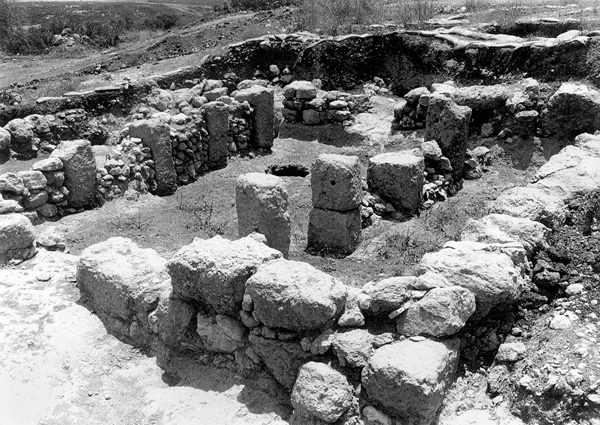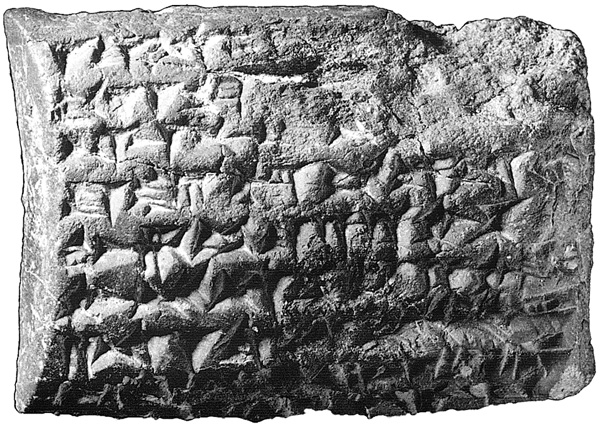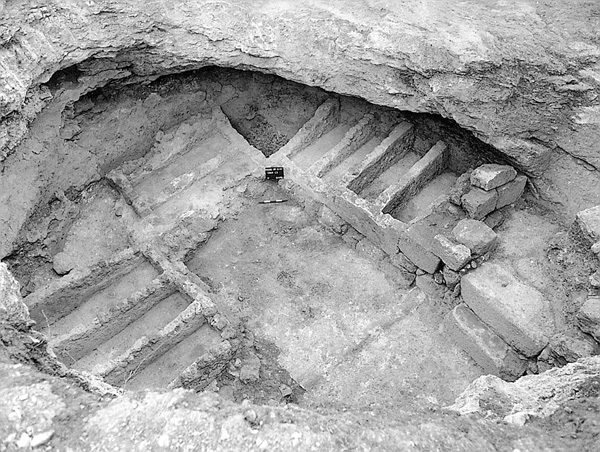Ḥadid, Tel
IDENTIFICATION
Tel
In 1940, following reports by local inhabitants, Y. Ory found remains of a structure with a mosaic floor in the southeastern part of the tell. In the framework of the Archaeological Survey of Israel (Map of Lod), rock-cut olive-oil presses, cisterns, and arcosolia tombs were reported in the vicinity of the tell. Iron Age I and II, Persian, Hellenistic, Roman-Byzantine, Early Islamic, and Ottoman sherds were recorded.
EXCAVATIONS
The tell itself remained unexcavated until, as part of the Trans-Israel Highway project, a salvage excavation was conducted from 1995 to 1997 at its northern and northwestern edges, over a large area that extends beyond
EXCAVATION RESULTS
BUILDINGS. Three Iron Age II building complexes were exposed. The northernmost is a massive building that was only partially excavated. It appears to have comprised two long rooms. Within it were found Iron Age II pottery (seventh century BCE) and a complete Neo-Assyrian cuneiform tablet dated to 698 BCE. The tablet is a bill of sale of property (land?) between two parties. The personal names mentioned in the document are clearly Akkadian, rather than Hebrew-Canaanite. The parties involved were not members of the local population, but of ethnic groups brought here by the Assyrians.

Exposed at the eastern edge of the excavation area was a well-preserved pillared building (8.0–9.0 m long), divided into three spaces by two rows of columns. Its walls are of large stones. Within the building was found Iron Age IIC pottery (seventh century BCE). Remains of walls of an additional building were revealed to the south. To the west of this complex was uncovered another building, which, despite its poor state of preservation, appears to have been divided into three spaces. An oil press was found in one of its rooms, and may indicate the function of the building. Seventh-century BCE pottery and an entire Neo-Assyrian cuneiform tablet dated to 664 BCE were also found in it. This document deals with a sum of money lent to what appears to have been an Israelite family for a three-month period by a member of the Mesopotamian population living in the area of the former Israelite kingdom (apparently as a result of the Assyrian population exchange policy). The person receiving the loan, according to the document, used his wife and sister as collateral security and promised to pay interest amounting to a third of the sum if he did not return the loan on time.

AGRICULTURE. In the area northwest of the tell, 25 oil presses of the lever-and-weights type were hewn next to each other into the exposed rock surface. They apparently date to the Iron Age II. There was also a group of rock-cut winepresses, with adjacent pits that may have served for settling and fermentation. Three other rock-cut oil presses dated to this period were noted. A large accumulation of incense stands, zoomorphic vessels, and pottery from the tenth–ninth centuries BCE was discovered in a quarried pit, perhaps a favissa belonging to a cultic structure on the tell. It thus appears that at the end of the Iron Age, the settlement at

TOMBS. A survey of the area revealed tombs of the Persian, Hellenistic, Roman, and Byzantine periods. Two ossuaries were found in an Early Roman period burial cave. Two large Roman period tomb complexes were also encountered, one with ten benches, the other with three rooms containing 14 vaulted loculi. From the Byzantine period, 17 rock-cut tombs were uncovered. In the western part of the excavation area, several quarried hollows were found, but it is not known whether these were pits, caves, tombs, or dwellings. One of these was partially excavated. It contained a large hall (approximately 7 by 6 m) and an entrance with carefully hewn doorposts. The use of this subterranean chamber and its date remain unclear, as there were no diagnostic finds. It may be attributed to the Roman-Byzantine period.
ITZHAQ BEIT-ARIEH
IDENTIFICATION
Tel
In 1940, following reports by local inhabitants, Y. Ory found remains of a structure with a mosaic floor in the southeastern part of the tell. In the framework of the Archaeological Survey of Israel (Map of Lod), rock-cut olive-oil presses, cisterns, and arcosolia tombs were reported in the vicinity of the tell. Iron Age I and II, Persian, Hellenistic, Roman-Byzantine, Early Islamic, and Ottoman sherds were recorded.
